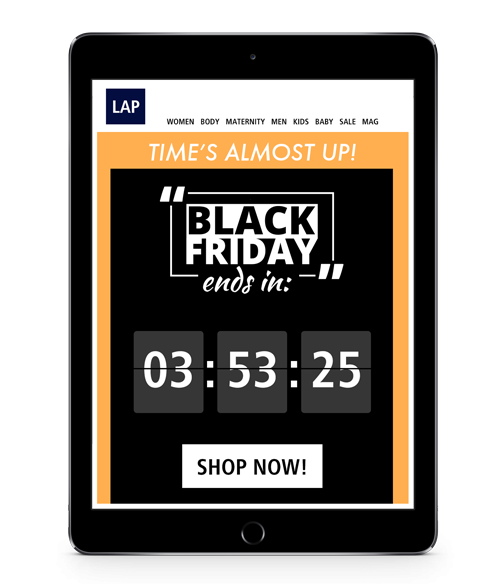Nov 22
| 2 minutes
read
3 Intriguing Emails to Send on Black Friday
At this very moment, digital marketers around the world are crafting email marketing campaigns for this week’s Black Friday frenzy. Black Friday has increased in popularity and has now become a global phenomenon – just look at last year, when 20% of all Swedes purchased a product with a Black Friday discount.
It goes without saying that this event is a golden opportunity for all of us digital marketers to boost engagement with our customers and kick-start the all-important holiday season. Using email marketing on Black Friday makes perfect sense: it allows you to offer the best deals to your most loyal customers, and you can easily create different segments to find the perfect, data-driven match for your discounted offers.
So for all digital marketers who are struggling to put together the perfect Black Friday email - here are 3 ideas to get you started!
Create a sense of urgency
Black Friday comes only once a year. This means that your customers only have 24 hours to buy their Christmas gifts at best value. Make this narrow timeframe really, really clear in your Black Friday email. Subject lines with phrases like “hurry up!” or “only six hours to go” are simple, yet clever ways to make sure your emails gets opened in time. Or even better: add a real-time countdown to your email!

Win back the window shoppers
During the Black Friday frenzy, lots of people will be browsing the web in search of the largest possible discounts for certain items. Some visitors will land on your website only to compare your offers with other online stores. Make sure you win back these digital window-shoppers by sending them a browse abandonment email that reminds them of the products they are researching.

Put your discounts on display
Black Friday is all about finding the best (and sometimes, unexpected) deals. A product recommendation in an email is a clever way to display products that spark your subscribers’ curiosity and deserve some extra attention. Tip: base your product recommendations on customer data, such as recently browsed, carted or purchased products. Maybe you don’t have individual customer data? Then base your recommendations on your complete customer base. Now that’s clever, isn’t it?

Find out more about the many benefits of product recommendations.